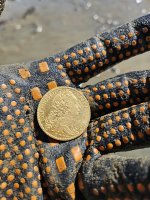Rebel - KGC
Gold Member
- Jun 15, 2007
- 21,680
- 14,739
 WELL! Did KGC/ex-REBS (CSA) outllaws "assist" Emperor of Mexico, Maximillian in 1867...? ALL that MEXICAN Treasury... GOLD! And FRENCH JEWELRY! CASTLE CAP, TX... "CASTLE"; CASTLE as in CASTLE - KGC...? "Google" Legend of Maximillian's GOLD
WELL! Did KGC/ex-REBS (CSA) outllaws "assist" Emperor of Mexico, Maximillian in 1867...? ALL that MEXICAN Treasury... GOLD! And FRENCH JEWELRY! CASTLE CAP, TX... "CASTLE"; CASTLE as in CASTLE - KGC...? "Google" Legend of Maximillian's GOLD
Last edited:




